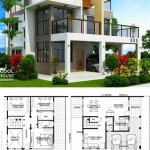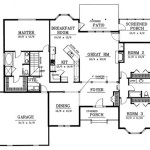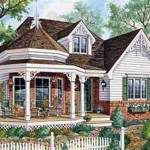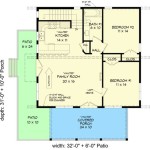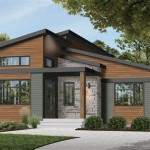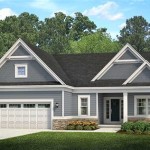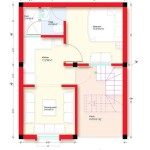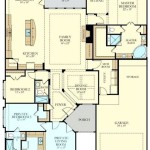Plans For Building Bird Houses: A Comprehensive Guide
Constructing bird houses offers a rewarding opportunity to contribute to local avian populations while engaging in a fulfilling hands-on project. Careful planning and execution are crucial for creating safe and functional habitats that cater to the specific needs of different bird species. This article details key considerations and provides guidance for developing effective plans for building bird houses.
Species-Specific Considerations in Bird House Design
The most fundamental aspect of bird house planning involves understanding the preferences and requirements of the targeted bird species. Different birds necessitate different entrance hole sizes, interior dimensions, and nesting materials. A bird house designed for a wren will be substantially smaller than one intended for a bluebird, reflecting their disparate sizes.
Entrance hole size is paramount. A hole that is too large increases the risk of predation by larger birds or mammals, while a hole that is too small will prevent the intended species from entering. Consult reliable ornithological resources to determine the appropriate entrance hole diameter for the specific bird species one wishes to attract. These resources typically provide detailed specifications for numerous common North American bird species.
Interior dimensions, including floor space and depth, are also crucial. Insufficient space can lead to overcrowding among nestlings, potentially hindering their development. Conversely, overly spacious interiors may make it difficult for parent birds to effectively brood their young. The height of the entrance hole above the floor is another important factor. A greater distance provides a safer retreat for fledglings, making it harder for predators to reach them.
Nesting materials preferences vary significantly among bird species. Some birds prefer natural materials such as twigs, grasses, and leaves, while others readily accept manufactured materials like cotton batting or shredded paper. Providing appropriate nesting materials encourages birds to utilize the provided bird house. It is important to avoid using materials that could trap or entangle birds, such as string or dryer lint.
Ventilation and drainage are critical for maintaining a healthy environment inside the bird house. Stagnant air and excessive moisture can promote the growth of mold and bacteria, posing a health risk to nestlings. Ventilation holes should be placed near the roof to allow for adequate air circulation. Drainage holes drilled in the floor of the bird house prevent water from accumulating after rainfall.
Material Selection and Construction Techniques
The choice of materials significantly impacts the durability and effectiveness of a bird house. Untreated wood is generally the preferred material, as it provides a natural and breathable environment. Avoid using treated lumber, as the chemicals used in the treatment process can be harmful to birds. Cedar, redwood, and cypress are excellent choices due to their natural resistance to decay. These woods are also less prone to warping and cracking than softer woods.
Plywood can be used for bird house construction, but exterior-grade plywood is recommended to withstand outdoor conditions. Plywood should be properly sealed and painted with non-toxic, water-based paint to prevent moisture damage. Avoid using pressure-treated plywood. Scrap lumber is often repurposed for bird house construction, promoting sustainability and reducing waste. However, ensure that any salvaged lumber is free from nails, screws, and other potential hazards.
Construction techniques influence the stability and longevity of the bird house. Joints should be securely fastened using screws or nails. Glue can be used in conjunction with fasteners for added strength. Ensure that all corners are square and that the roof is securely attached to prevent water from entering. A hinged or removable roof facilitates cleaning and monitoring of the bird house.
Roughing the interior walls below the entrance hole provides fledglings with a better grip to climb out of the bird house when they are ready to leave the nest. This can be accomplished by scoring the wood with a saw or attaching small pieces of hardware cloth. Avoid using perches on the exterior of the bird house, as they provide predators with a convenient foothold.
Consider adding a predator guard around the entrance hole. This can be a metal plate or a wooden ring that extends outward from the hole, making it more difficult for predators such as squirrels and raccoons to reach into the bird house. The predator guard should be sized appropriately to prevent the targeted bird species from having difficulty entering the bird house.
Placement and Maintenance Considerations
The location of the bird house is crucial for attracting birds and ensuring their safety. Different bird species have different habitat preferences, so it's important to choose a location that is suitable for the targeted species. Consult ornithological resources to determine the preferred habitat for the birds you wish to attract. Open areas, wooded areas, or areas near water sources may be more suitable depending on the species.
Bird houses should be mounted in a location that is sheltered from direct sunlight and strong winds. Facing the entrance hole away from prevailing winds and rain helps to keep the interior of the bird house dry and comfortable. Avoid placing bird houses near areas where pesticides or herbicides are used, as these chemicals can be harmful to birds.
The height at which the bird house is mounted is also important. Some bird species prefer to nest high in trees, while others prefer lower locations. Again, consult ornithological resources to determine the appropriate mounting height for the targeted species. Bird houses can be mounted on trees, posts, or buildings. Ensure that the mounting structure is sturdy and stable.
Regular maintenance is essential for keeping bird houses clean and safe. Clean out bird houses after each nesting season to remove old nesting material and debris. This helps to prevent the build-up of parasites and diseases. Check the bird house regularly for damage and make any necessary repairs. Replace any damaged or worn parts, such as the roof or entrance hole. Inspect the mounting structure to ensure that it is still sturdy and stable.
Consider installing a bird house camera to monitor the activity inside the bird house. This allows one to observe the nesting process and learn more about the behavior of the birds. Bird house cameras can be purchased online or at specialty stores. The camera should be installed in a way that does not disturb the birds.
By carefully considering these factors, one can develop effective plans for building bird houses that provide safe, functional, and attractive habitats for local avian populations. Thorough research, careful material selection, and meticulous construction techniques are essential for creating bird houses that will be enjoyed by birds for many years to come.

Diy Birdhouse Using Leftover Siding Diamond Kote Building S

Free Birdhouse Plans Diy Homemade Nesting Box Projects Patterns Monograms Designs Templates

Home Garden Plans Bh Bird House Construction Design Building Houses Free Kits

Birdhouses And Boxes Ornithology

Schoolhouse Birdhouse Easy To Build Bird House Plans

Diy Birdhouse Tutorials Bird House Plans Free Kits

How To Build A Basic Birdhouse Mother Earth News Bird House Kits Homemade Houses

Free Birdhouse Plans Bird House Woodworking

Simple Bird House Plans Instructions Super Easy Diy Nature Project Houses Are Great Gifts

Wren Bird House Plans

